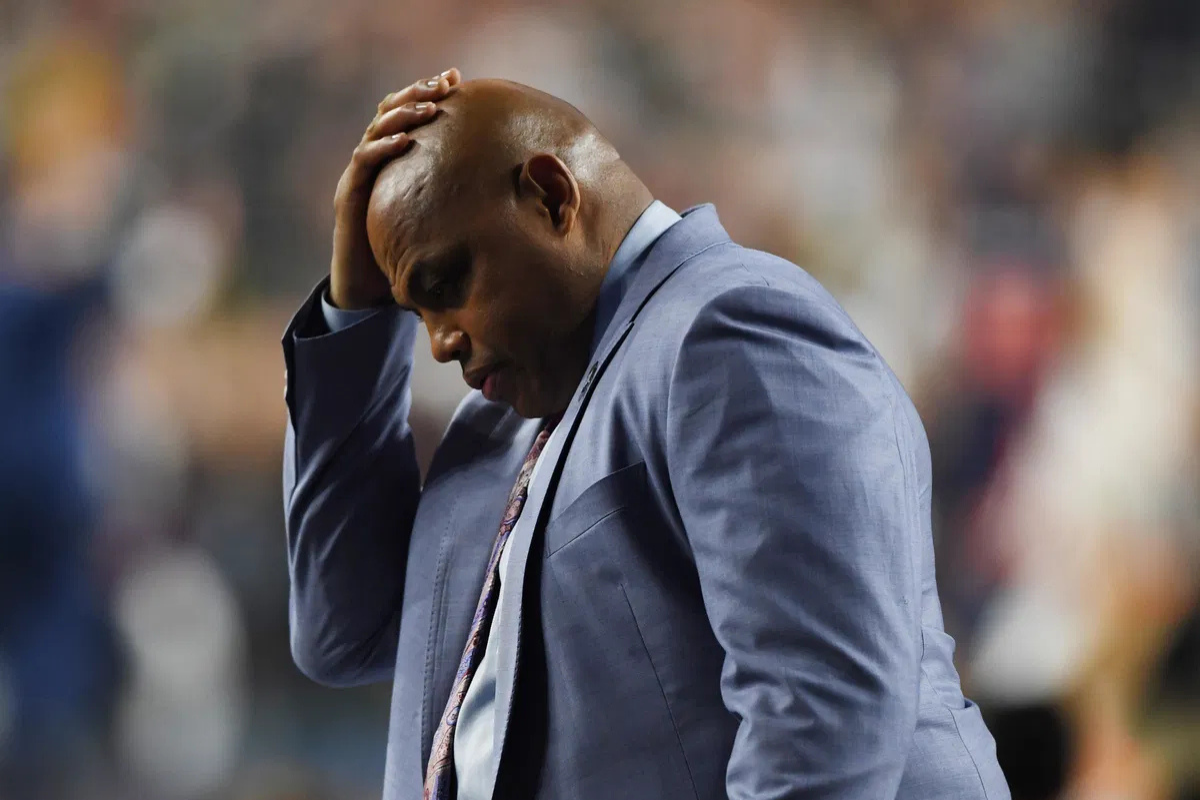
USA Today via Reuters
Apr 6, 2019; Minneapolis, MN, USA; Charles Barkley reacts in the second half in the semifinals of the 2019 men’s Final Four between the Virginia Cavaliers and Auburn Tigers at US Bank Stadium. Mandatory Credit: Shanna Lockwood-USA TODAY Sports

USA Today via Reuters
Apr 6, 2019; Minneapolis, MN, USA; Charles Barkley reacts in the second half in the semifinals of the 2019 men’s Final Four between the Virginia Cavaliers and Auburn Tigers at US Bank Stadium. Mandatory Credit: Shanna Lockwood-USA TODAY Sports
Charles Barkley landed in Philadelphia as the 5th pick in 1984, stepping into a locker room filled with Sixers’ 1983 glory and a bit of a disappointing 1984 season. Playing alongside Moses Malone, Julius Erving, and Maurice Cheeks, it looked like Philly had a juggernaut built for years. Even as a rookie, Barkley stood out, putting up 14 points, nearly 9 rebounds, and ranking fourth in win shares on a loaded squad. The team kept rolling with 58 wins in his first season and 54 the next. That rise was so fast it might’ve fooled the front office into thinking he could shoulder the whole franchise on his own.
Watch What’s Trending Now!
Barkley still remembers draft night in 1986, telling Bill Simmons they were out celebrating because Philly had the No. 1 pick—Brad Daugherty. That draft is remembered most for the heartbreaking loss of Len Bias, but before tragedy struck, the buzz was all about what the Sixers would do with the top pick. They actually owned it thanks to a slick 1979 trade, sending Joe “Kobe’s dad” Bryant to the Clippers for an unprotected ’86 pick. On paper, it looked like Philly was about to reload around Barkley. Instead, the front office had other plans—moves that Barkley believes completely wrecked his future with the Sixers.
It still stings for Barkley, who admitted, “It’s too soon for that b—-. Let me tell you something… I have been bitter and angry because that cost me at least one championship, probably two, because I was just becoming a star… We had the number one pick in the draft and me and the guys went out to celebrate that night. This is night before the draft,” But then something struck. He recalled getting the news at 5 a.m. from journalist Phil Jasner that Philly had traded Brad Daugherty, the No. 1 pick. Barkley’s first reaction? “There’s no way the Sixers are that stupid. You trade the number one pick in the draft.” What made it worse was finding out the pick went to Cleveland: “That’s stupid. Then you trade him to the competition.”
ADVERTISEMENT

USA Today via Reuters
Unknown date; Portland, OR, USA: FILE PHOTO; Philadelphia 76ers forward Charles Barkley (34) against the Portland Trail Blazers at Memorial Coliseum. Mandatory Credit: USA TODAY Sports
Daugherty, just 20 during the 1985-86 season, put up 32.0 mpg, 20.2 points per game, .648 FG%, 9.0 rebounds, 1.8 assists, 1.0 steals, and 1.1 blocks.. In return, Philly got Roy Hinson, age 24, who posted 34.6 mpg, 19.6 points per game, .532 FG%, 7.8 rebounds, 1.2 assists with advanced numbers of 17.4 PER, .125 WS/48, 0.7 BPM, 1.9 VORP.
The stats were middling, and he never quite fit next to Barkley—his play declined over the next two seasons before the Sixers flipped him for Mike Gminski. GM Pat Williams later explained in his book Tales from the Philadelphia 76ers that Daugherty wasn’t really on their radar. After passing on Brad Daugherty because Williams felt, “we were getting a really nice young player (in Hinson) who had proven he could play in the league.” That wasn’t the end, as the very next move was to trade Malone himself for Jeff Ruland and Clifford Robinson.
ADVERTISEMENT
On the other side, Malone went on to extend his consecutive All-Star appearances by three more years after the deal, while Daugherty developed into one of the Cavaliers’ best players in franchise history, becoming a 5-time All-Star. That’s why Barkley recently admitted he still hasn’t forgiven the franchise for making what he called the $19,200,000 mistake—Daugherty signing a $6 million deal in Cleveland and Malone signing a $13.2 million deal with Washington.
ADVERTISEMENT
Charles Barkley: A career that soared without a ring
Charles Barkley said his career in Philadelphia “went downhill” after the 1986 draft day fiasco, but the truth is far more layered. While it’s true he never led the Sixers back to the Conference Finals and often had little help around him, that same stretch actually marked the rise of his superstardom. By the 1986-87 season, Barkley was an All-Star for the first time and even led the league in rebounding—an incredible feat considering he was the shortest player in NBA history to do so, averaging 14.6 rebounds per game. Over six years, he became a perennial MVP candidate and established himself as one of the most dominant forwards of his generation.
The real turning point came in 1992, when Barkley finally demanded a trade and was shipped to the Phoenix Suns. Instantly, he thrived. In 1993, Barkley reached his peak—winning the NBA’s Most Valuable Player award while leading the Suns to the best record in the league and a trip to the NBA Finals. He nearly capped it with a championship, but his good friend Michael Jordan and the Chicago Bulls denied him in six games.
Top Stories
Lakers’ Gabe Vincent Dishes on LeBron James, Luka Doncic’s Sacrifices, Role on the Team and More (Exclusive)
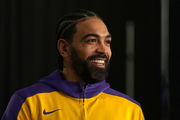
Respect Pours In for Shaquille O’Neal, Charles Barkley After $200,000 Announcement
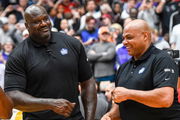
Calls Mount Against NBA Refs After Stephen Curry Wrongfully Punished vs Timberwolves
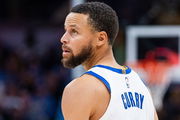
Arrest For Shaquille O’Neal’s Stolen Range Rover Made But More Bad News Awaits
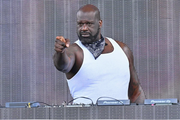
Caitlin Clark, JuJu Watkins Announce Injury Update After Months of Battle
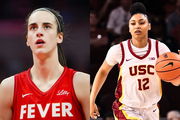
Even then, Barkley continued to produce defining moments, including his career-high 56-point explosion in the 1994 playoffs against Golden State, which powered Phoenix to a first-round sweep. By the time he retired, Barkley was an 11-time All-Star, the only player under 6’7” to lead the league in rebounding, and one of just four players in NBA history to surpass 20,000 points, 10,000 rebounds, and 4,000 assists. And yet, despite the missing ring, Barkley never let that define him.
ADVERTISEMENT
As he told the Los Angeles Times in 1996: “You know, I’ve been reading about how much a championship means to me. Hey, it’d be great to win a championship, don’t get me wrong. But God, c’mon! I have to look at the big picture.” He also said, “My life is an accomplishment. Me winning another few games and getting a ring, that won’t be an accomplishment to me.” Sixteen seasons, 22.1 points, 11.7 rebounds, 3.9 assists per game, an MVP, and a Hall of Fame induction in 2006—Charles Barkley’s career never went downhill. If anything, it soared, just without the jewelry.
ADVERTISEMENT
ADVERTISEMENT
ADVERTISEMENT

